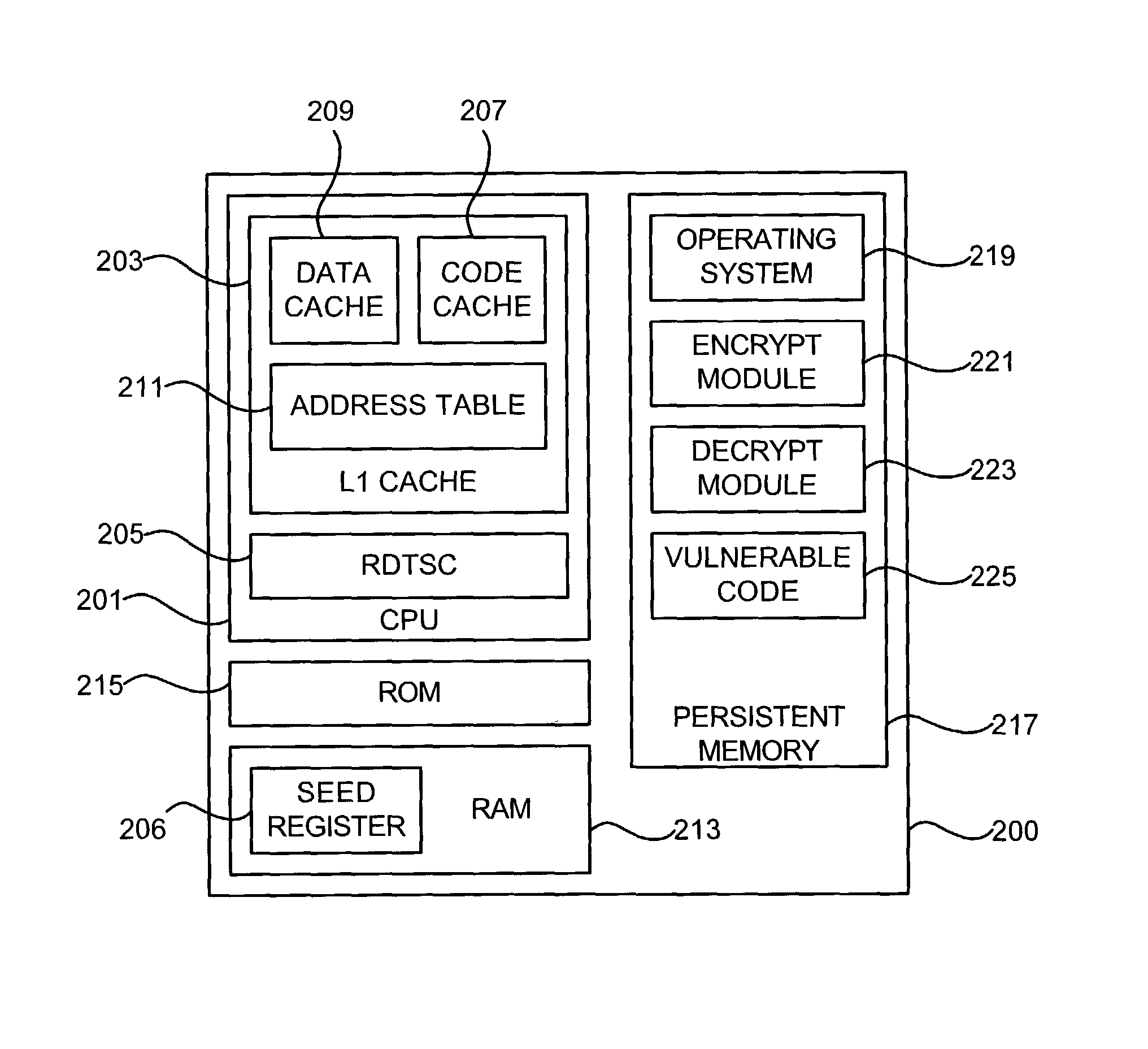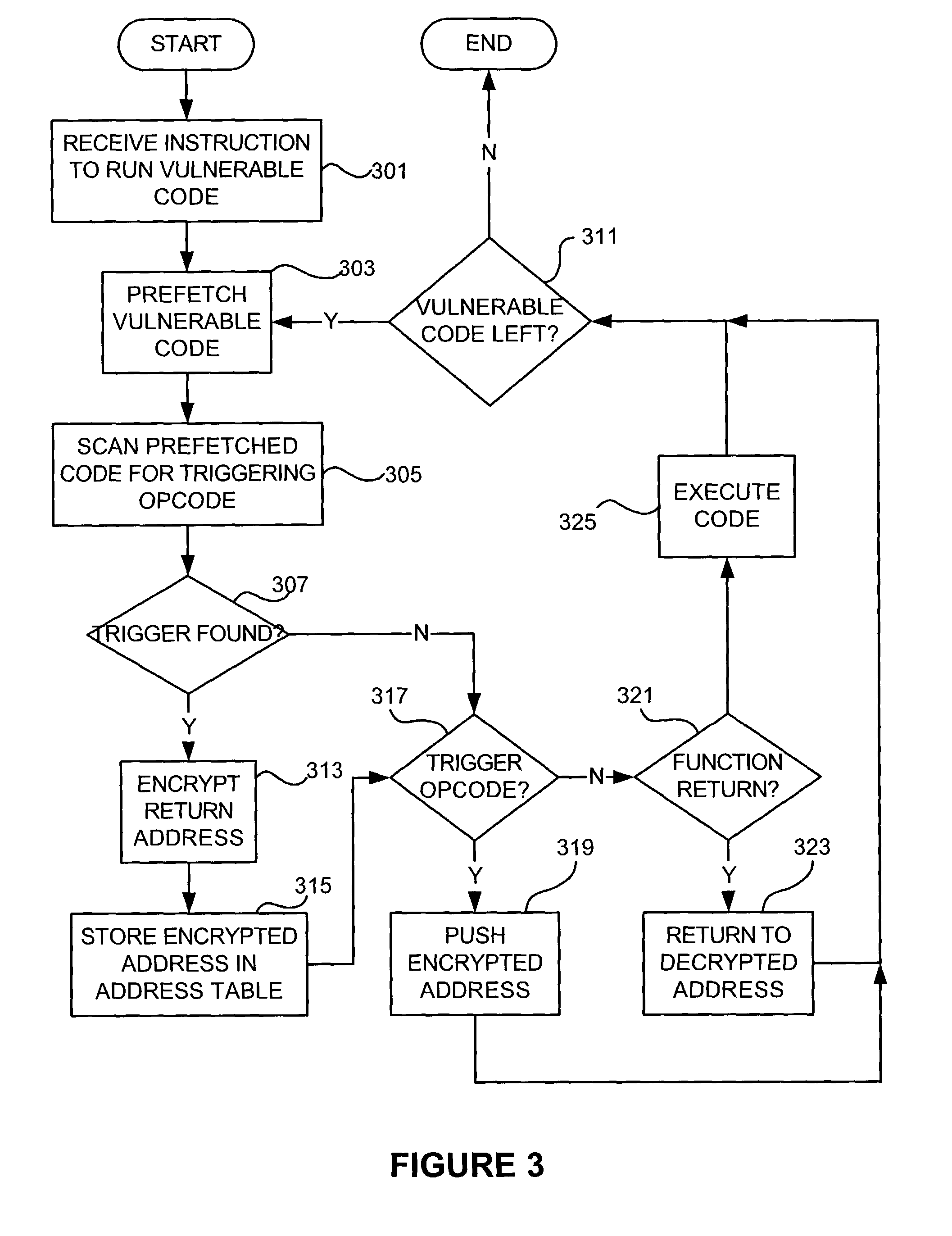Preventing stack buffer overflow attacks
a buffer overflow and stack technology, applied in the field of computer security, can solve problems such as system damage, system vulnerability to buffer overflow attacks, lack of error checking,
- Summary
- Abstract
- Description
- Claims
- Application Information
AI Technical Summary
Benefits of technology
Problems solved by technology
Method used
Image
Examples
Embodiment Construction
[0023]With reference to FIG. 2, a computer system may be adapted to protect against stack buffer overflow attacks by modifying the operating system to encrypt and decrypt return addresses in order to detect whether a return address value has been altered and, if so, to stop execution of the attacked program.
[0024]In one embodiment of the invention, a computer system 200 may include a CPU 201, such as an Intel X86-type processor that includes an L1 Cache (primary cache) 203 and read time stamp counter (RDTSC) 205 (the RDTSC indicates the cycle number the processor is running). When the computer is turned on, RDTSC 205 generates a value from which the processor 201 counts clock cycles. This value may be stored in a seed register 206 with the task state in RAM and used as a key for encrypting data, as further described below. Either the operating system or the CPU may initialize the seed register during the task creation.
[0025]L1 cache 203 may include a code cache 207 and data cache 20...
PUM
 Login to View More
Login to View More Abstract
Description
Claims
Application Information
 Login to View More
Login to View More - R&D
- Intellectual Property
- Life Sciences
- Materials
- Tech Scout
- Unparalleled Data Quality
- Higher Quality Content
- 60% Fewer Hallucinations
Browse by: Latest US Patents, China's latest patents, Technical Efficacy Thesaurus, Application Domain, Technology Topic, Popular Technical Reports.
© 2025 PatSnap. All rights reserved.Legal|Privacy policy|Modern Slavery Act Transparency Statement|Sitemap|About US| Contact US: help@patsnap.com



